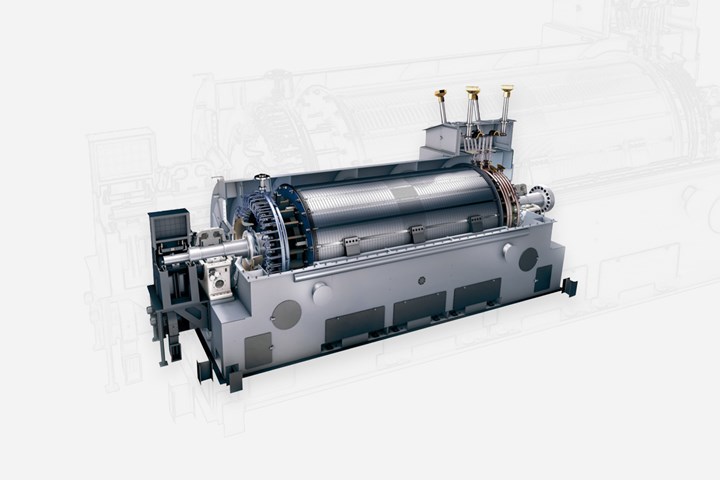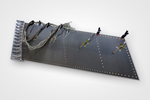Continuous Composites, Siemens Energy apply high-performance materials for power generators
Continuous Fiber 3D Printing (CF3D) enables new designs for AM with thermoset GFRP composite and exceeds material requirements for generator components.

Composite power generator. Photo Credit: Business Wire
Continuous Composites (Coeur d'Alene, Idaho, U.S.) and Siemens Energy (Munich, Germany), a spin-off of the former Gas and Power division of Siemens Group, announced the successful demonstration of Continuous Fiber 3D Printing (CF3D) technology for Siemens Energy’s generator components. Through this multi-year collaboration, the companies developed a thermoset glass fiber-reinforced polymer (GFRP) material, introducing better mechanical performance at higher temperatures, topology optimized designs and dynamic fiber steering to orient anisotropic fibers in the load direction for customized applications.
“The deployment of CF3D for manufacturing generator components is one example where our technology is disrupting current manufacturing processes and replacing metallic parts with high-performance composite materials,” says Tyler Alvarado, CEO of Continuous Composites. “Our collaboration with Siemens Energy demonstrates our ability to develop and customize material solutions with stringent mechanical property requirements which go well beyond the energy sector.”
Continuous Composites and the company’s materials partner, Arkema (Cologne, Germany), through its , jointly developed a high-temperature CF3D thermoset polymer, enabling the printing of large, complex parts that would not be able to be manufactured using traditional composite techniques. According to Continuous Composites, the material achieved a glass transition temperature (Tg) of 227°C and experienced minimal strength loss at temperatures above the Tg. Further, the CF3D-printed composites reportedly demonstrated fiber volume fractions (FVF) greater than 50% with less than 1.5% void content.
According to Continuous Composites, several generator components are currently manufactured using a metal casting process which is expensive and has long lead times. The development of these new materials paired with the CF3D process, however, is said to exceed the material temperature requirements of generators and other Siemens Energy applications. Demonstration results for the energy sector include manufacturing costs that are five times less than traditional generators and decreased lead time from 8-10 months down to three weeks. Moreover, it is reported that there is $1 million in long-term downtime energy savings and a significant reduction in part weight and material waste.
“The superior mechanical performance of CF3D, combined with the significant cost and lead time reduction, led to our selection of Continuous Composites,” says Dr. Joel Alfano, principal technology development engineer at Siemens Energy. “The opportunity to replace a metallic generator component with composite materials leveraging AM is a powerful breakthrough for solving the constraints we face in the energy industry, and CF3D technology is making it possible.”
Related Content
-
Plant tour: Airbus, Illescas, Spain
Airbus’ Illescas facility, featuring highly automated composites processes for the A350 lower wing cover and one-piece Section 19 fuselage barrels, works toward production ramp-ups and next-generation aircraft.
-
Otto Aviation launches Phantom 3500 business jet with all-composite airframe from Leonardo
Promising 60% less fuel burn and 90% less emissions using SAF, the super-laminar flow design with windowless fuselage will be built using RTM in Florida facility with certification slated for 2030.
-
Plant tour: Aernnova Composites, Toledo and Illescas, Spain
RTM and ATL/AFP high-rate production sites feature this composites and engineering leader’s continued push for excellence and innovation for future airframes.






